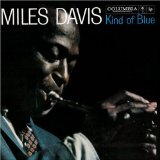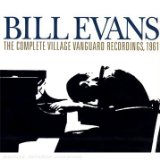Lesson Four
Subjects Covered
- Chords
- The hypnotic D, A, and E chord sound
- Scale
- The pentatonic major scale on the 9th fret
- Musicality
- More rhythm
- Exercises
- Practicing rhythmic solos
The main points for this whole course are
- keep your hands relaxed
- keep your guitar in tune
- play in time, with the rhythm
- musicality always beats technicality
- practice too slow instead of too fast
- hear the music in your head
- play along to records whenever you can
- play with other people whenever you can
A dreamy folk song
Points to remember
- use certain fingers of the left hand as pivot fingers so you can keep your hand planted
- focus on strumming
- play in time
- try adding and removing the pinky and ring fingers of your left hand to change the sound of the chord
The chord progression goes like this:
D A E A
Play each chord for a measure.
Important!
These chords have guide notes. This means that moving one chord can be made easier!
- From D to A (and A to D), keep your 1st finger down.
- From A to E (and E to A), keep the second finger down.
|
|
||
|
Scales
The pentatonic major scale on the 9th fret (an E major pentatonic scale)
It�s a pentatonic scale, just like in lesson two, except it is on a different fret. Play it along to the recorded track.

For this D, A, E song you can alternate between using the D major pentatonic scale on the 7th fret and the E major pentatonic scale on the 9th fret. Take you time switching between the two scales and keep your hands relaxed!
Once you have played it one time go here. This time pick 3 or 4 notes and try to make a solo with that. Then try to bend a few notes.
Musicality
So far we have focused on finding a groove and creating simple solos. A lot guitar
playing centers around these to facets of music. So far we know how to count a measure:
1 2 3 4 1 2 3 4 ...
You can also count the "and" of the beat. It would go like this:
1 + 2 + 3 + 4 1 + 2 + 3 + 4 ...
Listen to music on the radio or anywhere. Tap your foot to the beat. Count to beat.
Then count the "and"s of the beat too. Different styles of music accentuate different
parts of the measure.
Exercises
Note: these exercises are like the previous exercises but the build in more of focus on rhythm.
Learning the chords
- Play the chords along to the mp3. Just strum each chord on the first beat of each measure. Remember, it is the rhythm that counts, not if you get the chord to sound right!
- Once you have the basic feel, add a little bit more. Strum on the 1st and 3rd beats of every measure.
- Now strum on each beat of the measure.
- Muffle the strings with your left hand, play as slow as needed and play the "ands". Use a metronome.
Learning the newest pentatonic scale
- Set your metronome on 60 clicks per minute (or even slower).
- Play one a note for every beat.
- Play one note for every two beats. This is actually harder than it seems and it is good for sense of time.
- Play on the and of the beat as well. Play the same note twice per beat. Slow down the metronome if you have to.
- This is hard. Just play on each "and" of the beat. This will probably take a few weeks to get so be patient.
Make up a simple solo
- Pick three or four notes from the pentatonic scale. Use these notes to come up with a simple solo to play over the recorded song. Do not be afraid to pick a note and let sound for a long time.
- Now pick two notes from the pentatonic scale. Focus on playing a ryhthmic solo. Create a groove based solo. Try to incorporate playing on the "and" of the beat.
- Try soloing over the chords with the pentatonic scale on the 7th fret and the 5th fret. Things sound a little different.













